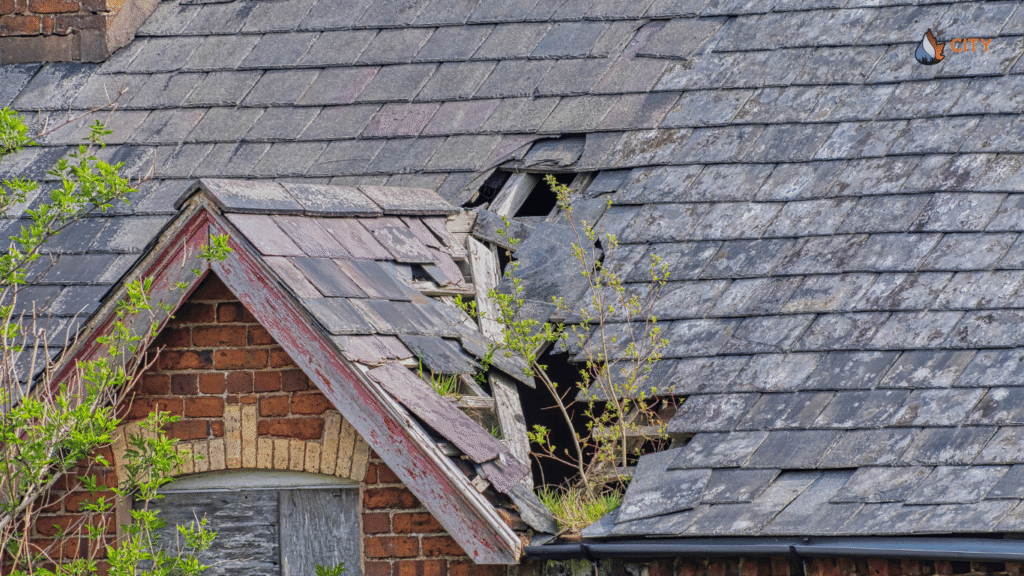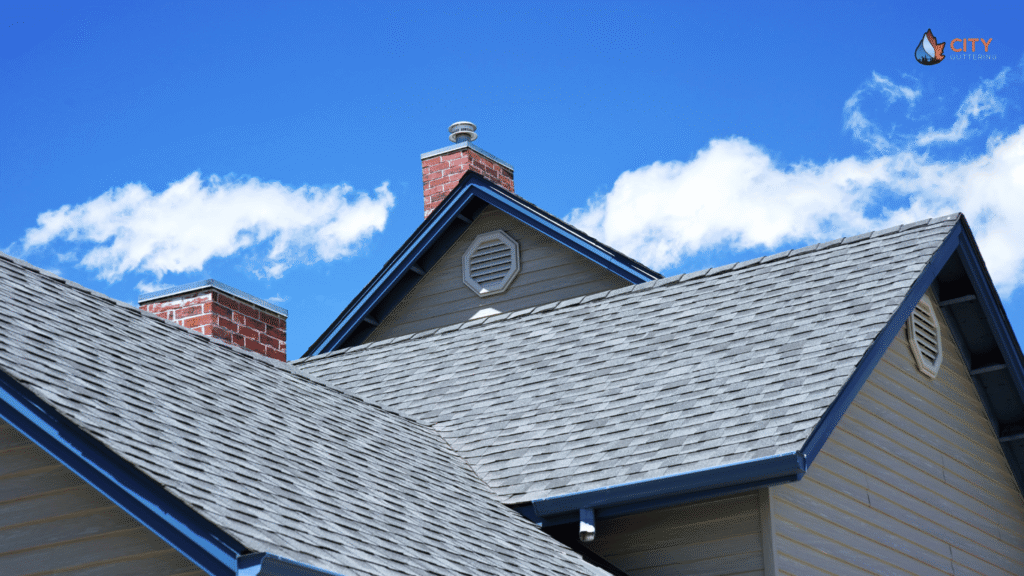The pitch of a roof is more than just a detail in your home’s design. It determines how effectively rainwater runs off, how well gutters handle water flow, and even how your property looks from the street.
How to Quickly Calculate Pitch Of Roof for Your Home
For homeowners in London and Surrey, where rain is frequent, understanding roof pitch is especially important. Whether you are planning a new roof, fixing drainage issues, or making sure your gutters can handle heavy rainfall, knowing how to calculate roof pitch correctly is a valuable skill.
What Is Roof Pitch?
Roof pitch describes the steepness or slope of your roof. It is usually expressed as a ratio, such as 4:12, meaning the roof rises 4 inches for every 12 inches of horizontal distance. The steeper the ratio, the sharper the angle of the roof.
There are two common ways to describe pitch:
- Ratio (rise over run): The traditional format used by builders.
- Degrees: The angle of the slope when measured with a protractor or digital tool.
Steep pitches are common in older British homes and cottages, while modern homes may have lower slopes for a more contemporary look.
Why Roof Pitch Matters
The angle of your roof isn’t just about style. It plays a crucial role in how well your home stands up to weather conditions.
Drainage and Gutters
A roof with too shallow a slope may cause water to pool, increasing the risk of leaks. On the other hand, very steep roofs send rainwater rushing into gutters at high speed, which requires strong, well-maintained gutter systems to handle the flow.
Structural Safety
Roofs must support the weight of rainfall, and in some areas, snow. Pitch is a key factor that determines how well water or snow slides off instead of putting pressure on your roof structure.
Aesthetic and Value
Pitch affects how your property looks. A steep roof may give a traditional, timeless appearance, while a flatter roof looks more modern. The right pitch blends function with design.

Tools You’ll Need to Measure Roof Pitch
Measuring roof pitch doesn’t require complicated equipment, but accuracy is important. Here are the essentials:
- Tape measure
- Spirit level (at least 12 inches long)
- Carpenter’s square
- Ladder (if measuring outside)
- Roof pitch calculator or smartphone app for conversions
Having these tools makes the process smoother and helps reduce errors.
Step-by-Step Guide: how to calculate roof pitch?
There are three main methods you can use depending on where you measure from.
Method 1: Measuring from the Attic
- Place a spirit level horizontally against a rafter.
- Mark 12 inches along the level.
- From that mark, measure vertically to the top of the rafter.
- The number you record is the rise. For example, if it rises 6 inches, your roof pitch is 6:12.
This method is safe and accurate since you can measure without climbing on the roof.
Method 2: Measuring from the Roof Surface
- Place the level flat against the roof.
- Mark 12 inches along the level.
- From that point, measure vertically down to the roof surface.
- That number is the rise.
This method gives you direct results but requires safety precautions when working on the roof.

Method 3: Using a Roof Pitch Calculator or App
For homeowners who want a quick result, roof pitch calculators are available online or as mobile apps. You enter the rise and run, and the tool calculates the pitch ratio and converts it to degrees.
Converting Roof Pitch to Degrees
Builders often work with ratios, but sometimes it’s useful to know the pitch in degrees. The formula is straightforward:
Pitch (%) = (Rise ÷ Run) × 100
For example, if your roof rises 6 inches over a 12-inch run:
6 ÷ 12 × 100 = 50% slope.
Using a conversion chart, this equates to around 26.5 degrees.
Here’s a simple reference table:
| Pitch (rise:run) | Slope (%) | Degrees |
| 3:12 | 25% | 14° |
| 4:12 | 33% | 18° |
| 6:12 | 50% | 26.5° |
| 9:12 | 75% | 37° |
| 12:12 | 100% | 45° |
Common Roof Pitches in the UK
In the UK, most traditional homes have roof pitches between 30° and 45°. This range helps water flow away efficiently while giving homes their classic character.
- Low Pitch (below 25°): Found on modern builds and extensions.
- Medium Pitch (25°–35°): Typical in suburban homes.
- Steep Pitch (40°+): Seen in older cottages and period properties.
For London and Surrey, medium to steep pitches are common due to the regular rainfall.
How Roof Pitch Affects Gutters
The connection between roof pitch and gutters is often overlooked.
- Steep Roofs: Rain runs quickly into gutters, which means they must be securely fastened and large enough to handle the water volume.
- Low-Slope Roofs: Water drains more slowly and may pool, increasing the risk of overflow.
This is why professional gutter installation and maintenance is essential. A well-calculated pitch combined with strong gutters ensures your home stays dry and protected.
Mistakes to Avoid When Measuring Roof Pitch
Homeowners often make small errors that lead to inaccurate results. Here are the most common:
- Not keeping the level perfectly horizontal.
- Measuring on uneven roof surfaces like tiles.
- Using a short level that skews the measurement.
- Ignoring safety equipment when climbing onto the roof.
If you’re unsure, it’s always safer to measure from inside the attic or use a professional service.
When to Call a Professional
While it’s possible to measure roof pitch yourself, there are times when calling an expert is the best choice.
- If your roof is steep and difficult to access.
- When you need accurate calculations for renovations or extensions.
- If you notice water overflowing from gutters or leaks inside your home.
At City Guttering London, we handle roof and gutter assessments for properties across London, Surrey, and Hampshire. With over 200 five-star reviews, our team ensures your drainage system is set up correctly, preventing costly issues in the future.

Conclusion
Knowing how to calculate pitch of a roof is valuable for homeowners and property managers. It gives you insight into your home’s structure, drainage needs, and maintenance requirements. While you can measure pitch with simple tools like a level and tape measure, accuracy is key. Even small mistakes can lead to poor drainage or gutter problems.
For homes in London and Surrey, where rain is frequent, the roof pitch directly impacts how well gutters perform. If you’re planning repairs, dealing with leaks, or simply want peace of mind, calling a trusted professional makes all the difference.




